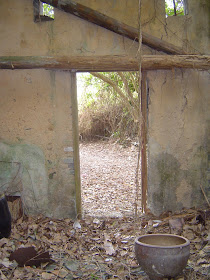Just as a scientist who discovers a new species of plant or animal has the right to name that species, so it is the prerogative of the first rock climber to lead a new climb to name that climb. Kipling Groove, on Gimmer Crag in Great Langdale, was climbed for the first time in 1948 by Yorkshireman Arthur Dolphin and is one of only three climbs in the Lake District to be widely known by its initials, the other two being Overhanging Bastion on Castle Rock of Triermain and Central Buttress on Scafell. The 1967 Langdale guidebook described it as
A superb way up a very impressive piece of rock.
It is also my all-time favourite climb.
So why did Dolphin name his climb Kipling Groove? His choice had nothing to do with its being an exceedingly nice cake, which British readers will recognize as a reference to the other Mr Kipling; as anyone who attempts the climb will quickly discover, it isn’t a piece of cake in any sense of the phrase. In fact, it’s ‘ruddy ’ard’! For anyone unfamiliar with regional dialects in England, ‘ruddy’ is a widely used mild expletive ‘oop north’ that, like the Cockney ‘bleeding’ and the Australian ‘flaming’, avoids the blasphemous connotations of ‘bloody’, while the second word reflects a widespread habit among working-class speakers, that of dropping any aitch that has the misfortune to start a word:
In ’ertford, ’ereford and ’ampshire, ’urricanes ’ardly ever ’appen.
Eliza Doolittle in My Fair Lady.
I climbed Kipling Groove for the first time 42 years ago today. I was the same age as Dolphin had been when he pioneered the route. The date is fixed in my memory because it is also the day my grandmother died, and my mother was extremely upset with me because I chose to go climbing rather than stay at home to await the inevitable news. I was accompanied by two friends, with whom I’d been climbing for four years, and this was the hardest climb we’d ever attempted together. In climbing parlance, we’d be ‘pushing the boat out’.
Although it is situated 2,000 feet above sea level, Gimmer is one of the few ‘high crags’ that can be climbed on in October without your fingers dropping off because of the cold, mainly because it faces south and attracts whatever sunshine there is. The crag itself is cut at half-height by a huge ledge (Ash Tree Ledge, although the trees are long gone), and climbs above the ledge, such as KG, have the added fear factor of 150 feet of air beneath your feet before you even start.
The first pitch of KG is just a scramble, so most parties don’t bother with ropes until the second pitch. This is the much-photographed ‘undercling pitch’, which is much easier than it looks, although you wouldn’t think so given the meal that many climbers make of it. It entails a 20-foot traverse left underneath a large overhang on big footholds, followed by a straightforward ascent of a wide crack to a small stance in a deep recess—the so-called ‘cave stance’.
For reasons that are now forgotten, I was given the responsibility of leading the final pitch, a 100-foot runout on extremely steep rock. The start involves climbing out on to the face on the right to gain a thin crack. I’d been reading the guidebook the night before, and the details were fixed in my memory:
…ascend a thin crack, past a peg runner, until the face begins to impend, necessitating a step right to a small foothold below a bulge. The next move is the crux. A strenuous arm pull brings a diagonal crack above the bulge within reach, and, a little higher, a sharp-edged horizontal crack….
Guidebooks were quite verbose in those days, although there is no mention of the fact that it is both ‘bold’ (meaning that protection is poor, so a long fall is likely if you come off) and ‘exposed’ (meaning that it is impossible to ignore just how far down it is before you hit the ground). A word about the peg (or
piton): this is a piece of steel that had been hammered into a thin crack in the rock, making it semi-permanent. In a footnote in the list of first ascents, the guidebook writer had added the following:
The peg appeared on the third ascent. Time and fear have hallowed its use.
Before the Second World War, rock climbing had been an exclusively middle-class pastime, and Arthur Dolphin was probably the last, and most talented, climber in that tradition. However, the climber who placed the peg, Joe Brown, was the spearhead of mass working-class participation after the war and already a legend in climbing circles when he ‘desecrated’ Dolphin’s masterpiece. Much has been made of the class angle here, but in fact Dolphin’s regular climbing companions were all working-class lads from West Yorkshire who held him in such high esteem because of his boldness and innate ability that two of them did the fourth ascent of KG in a bid to remove the peg. They failed, but they didn’t use it.
And neither did I, feeling that if I had clipped it, I would have been dishonouring Dolphin’s memory, because he hadn’t had the psychological reassurance of this extra protection when he pioneered the climb. Tragically, Arthur Dolphin was killed in a freak accident on the Aiguille de Géant in 1953 as he tried to prove his fitness for the successful Everest expedition of that year.
As the guidebook makes clear, the section above the peg is the hardest on the climb, and the foothold mentioned in the description is the only one for about 15 feet. I reached the diagonal crack with my right hand and secured a solid finger jam—and immediately beat a hasty retreat, not because it was hard but because it seemed so easy that I thought I must be missing something. However, once I’d convinced myself that I could do it, I repeated the sequence I’d already done and, following a very difficult pull on the finger jam, I was able to reach the horizontal crack, slightly to the right, with my left hand.
Beginners are taught that crossing hands in the way I’ve described is something they shouldn’t do, but it’s a ‘rule’ that few people follow nowadays. You do what works. However, I’ve noted over the years that many climbers faff about trying to arrange extra protection in the diagonal crack, which I regard as a dumb thing to do given that you’re hanging on with one hand with no proper footholds. After all, once you’ve reached the horizontal crack, a quick hand traverse will bring you to a small ledge and an end to the major difficulties. The rest is straightforward.
I never expected to climb KG again, because I came out to Hong Kong in 1974, but I reckoned without Paula, who was dissatisfied with the easy climbs I’d been taking her up when we moved back, temporarily, to the UK in 1989. Once again, I didn’t clip the peg, which was still there. Then, in 1995, I climbed it again, this time with Siegfried, who was only 16 years old at the time. I must have found it easy, because we then climbed a route called Gimmer String, which breaks out left from the cave stance and is a grade harder than KG. I climbed it for the last time (to date) in 1999, again with Siegfried, who led the hard pitch. He didn’t clip the peg either.
I’ve never seen a good picture of anyone on Kipling Groove, so I’ve included a couple of pictures of a route called Gillette Direct, which I climbed in 1996, shortly after my fiftieth birthday, and which is two grades harder than KG. It is the best single-pitch climb I’ve ever done and is located on Neckband Crag, on the other side of the valley facing Gimmer Crag. It therefore faces north, hence the sweater.
Although this is the steepest part of Gillette Direct, it is also the easiest. It gets much harder from here. Note the temporary protection device in the crack below my feet.
This photo was reproduced in the 1999 Langdale guidebook, where it is confusingly captioned “Dennis Hodgson on the crux of Gillette Direct”. The crux is actually reaching the handhold being used in this picture. This involves trusting a rounded dimple in the rock for the left foot as you reach for the hold. I fully expected my foot to slip as more and more weight came on it, and in fact Siegfried did come off at this point. He swung out into space, and I had to lower him to the ground so that he could start again. He was successful at the second attempt. The climb continues up the narrow corner, and difficulties are relentless all the way to the top.










